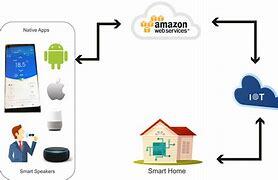ROLE OF IOT IN HOME AUTOMATION

A home automation system typically connects controlled devices to a central smart home hub (sometimes called a “gateway“). The user interface for control of the system uses either wall-mounted terminals, tablet or desktop computers, a mobile phone application, or a Web interface that may also be accessible off-site through the Internet.
While there are many competing vendors, there are increasing efforts towards open source systems. However, there are issues with the current state of home automation including a lack of standardized security measures and deprecation of older devices without backwards compatibility.
Home automation has high potential for sharing data between family members or trusted individuals for personal security and could lead to energy saving measures with a positive environmental impact in the future.
Utilizing home automation could lead to more efficient and intelligent energy saving techniques. By integrating information and communication technologies (ICT) with renewable energy systems such as solar power or wind power, homes can autonomously make decisions about whether to store energy or expend it for a given appliance, leading to overall positive environmental impacts and lower electricity bills for the consumers using the system. In order to do this, researchers propose using data from sensors regarding consumer activity within the home to anticipate the consumer needs and balance that with energy consumption.
Article By
Aravinth

